Crafting your professor resume is like shaping hundreds of young minds — it requires knowledge, precision, and a touch of creativity. As seasoned guides of higher education, professors artfully navigate the realms of advanced instruction and research, while also publishing scholarly articles and books.
But how do you encapsulate all of this in a concise, A+ resume? Well, this guide's here to help you figure that out with some pragmatic tips, real-life examples, and compelling templates. Prepare to become the candidate that every university wants on their staff. Advanced academics, meet advanced resume writing.
Keep reading to learn all about:
- Choosing the best format for your resume
- Crafting an eye-catching professional profile
- Selecting the right skills for your professor resume
- Building a stand-out professor work experience section
- Listing properly your education
- Accessing top resources for job-seeking professors
Still looking for a job? These 100+ resources will tell you everything you need to get hired fast.
1. Select the best format for your professor resume
You presented your best work and wrote a wonderful piece on your past responsibilities and achievements, yet you’re not getting any calls from recruiters. How would that be possible?
“Less is more” is not just a cliché when it comes to building your resume. There’s only as much time available for a recruiter to review a CV as they get. And well, it’s usually 7 seconds. It is with this in mind that you should organize your resume into a concise and neat piece of writing.
The following tips may help you design your professor resume effectively and with an emphasis on the most important aspects:
- Space out individual sections clearly, and make their headings stand out.
- Employ bulleted lists, avoiding large blocks of text when describing your past work experience.
- Remember to name your past achievements and responsibilities reverse-chronologically.
- Use ideally a two-column layout and keep your resume no longer than two pages.
- Avoid flashy images. Make it simple.
- Use a traditional typeface, such as Georgia, Calibri or Cambria.
- Save your resume in PDF format. Use Word only if your prospective employer requires it.
2. Craft an eye-catching professional profile for your professor resume
A professional profile serves as a brief statement that encompasses your role and your biggest achievements. It should catch a recruiter’s attention in a trice, conveying your aptitude for successfully performing the job you are applying for.
Many candidates commit the same mistake — they make their professional profile too long, too vague, or simply irrelevant.
Don’t be those candidates, and ensure that the hiring manager gets the picture of your exceptional skills from the very beginning.
- Tailor your profile to the job posting using the most important keywords from it.
- Be relevant and concise when introducing your duties.
- Mention your exceptional skills.
- Use quantifiable achievements.
- Employ impactful verbs and attributes.
Professor professional profile example
Committed and dependable College Professor and a member of the Communications Department with over 7 years of experience in teaching Journalism. Adept at instructing students on how to successfully and responsibly deliver the news. Experienced in various educational methodologies promoting personalized learning. A dedicated faculty member, passionate about helping learners find their place in the journalism industry.
3. Include the most effective hard and soft skills in your professor resume
In order to select the right skills for your professor resume, you may first need to answer the following questions:
- What competencies is my prospective employer looking for?
- What are my relevant hard skills for this specific position?
- What soft skills should I put on my professor CV?
Use the job posting as a cheat sheet to answer the first question. There may be certain common skills required by many employees, regardless of the industry. Such skills are called “transferable”, and they could include communication, active listening, or problem solving. Mention them at the top of your list.
As for your hard and soft skill-sets, these will, again, differ based on a specific job ad. However, you may want to include any relevant abilities that you possess and will make your professor resume stand out.
Effective hard skills for your professor CV
- Analysis
- Source checking
- Outreach
- Technical writing
- MS Office
The best soft skills to put on your professor resume
- Outstanding oral and written communication
- Active listening
- Engaging style
- Leadership
- Social and emotional intelligence
- Flexibility
- Time management
- Problem solving
- Teamwork
- Analytical thinking
- Creativity
- Cultural competence
- Patience
- Work ethic
- Attention to detail
- Curiosity
4. Make your professor work experience section shine with accomplishments
To write an effective work experience section for your professor CV, follow these handy tips:
- Describe your past roles in a reverse-chronological order, starting with the most recent position.
- Use bulleted lists to describe your responsibilities and achievements.
- Focus on your accomplishments rather than your daily duties.
- Use numbers whenever they apply (courses taught, thesis supervised, scholarly articles published, etc.).
Professor work experience section example
University of Europe, Rome, Italy
Journalism Professor
2014–2020
- Taught 4 postgraduate courses on Journalism.
- Instructed over 250 students on how to successfully and responsibly deliver the news.
- Supervised 7 MA theses, providing full support to students.
- Published 7 scholarly articles on modern journalism.
- Runner-up: Educational Review Article of the Year Award for Keeping up with Modern Journalism.
5. Make your professor education section count
You will typically need a doctoral degree to become a university professor. However, some institutions may hire professors for specific degree programs focusing on their experience in the field instead of their education.
Regardless of your situation, you will typically need to list your school name along with its location, degree, and graduation year.
If you do not have much experience, you may want to include your academic achievements, relevant coursework or areas of interest that will make your education section stand out.
Professor education section example
Education
University of Europe, Rome, Italy
PhD in Journalism
Graduation Year: 2012
6. Top resources for job-seeking professors
Entering the academic job market can be as challenging as unraveling quantum physics. But don't worry, just as in your ever-elusive search for answers, there are resources to aid you on your job-seeking journey. Here are our top picks:
- Academic job boards: Stretch your job hunt beyond generic job sites. Target specific academic job boards like HigherEdJobs and Academic Positions. Who knows which university is keen to absorb your expertise right now?
- LinkedIn networking: Ever heard of networking? Of course, you have. And, LinkedIn is your digital conduit to it. Engage with colleagues, join groups, reach out to universities.
- Office of career development: Your current institution's career development office can be a gold mine. Reach out and explore their resources for academics looking to expand or transition.
- Resume templates and samples: A well-crafted professor resume can open doors. Hunt for top-notch examples and templates to guide you. Don’t be surprised when they’re less mystical than you might think.
- Professional associations: Associations like Modern Language Association and American Historical Association provide plenty of resources, job listings, and networking opportunities. Getting involved has never been so rewarding.
Remember to portray not just what you've done, but how you've made an impact. Now that's some career advice you can bank on. Will your class discuss it tomorrow? Maybe not. Will it help you land that dream job? Absolutely.
Professor Resume FAQ
What should be included in a professor resume?
Your professor resume should include your contact information, a focused summary statement, areas of expertise, education credentials, positions held, published works, awards and honors, and professional associations. Also consider including any relevant courses taught, research interests, or community service.
Can I include non-academic work experience in my professor resume?
If the non-academic work experience contributes to your skills as a professor or is relevant to the position you're targeting, it's worth mentioning. Showcase how these skills can be transferred to an academic setting.
How long should a professor resume be?
Given the depth of experience most professors have, a two-page resume is acceptable. For those with extensive publications, a separate CV may be used to detail them, with a brief mention and reference on the resume.
Should I tailor my resume for each job application?
Absolutely. Every job description is different and tailoring your resume to each role shows you're genuinely interested. Customizing your resume allows you to highlight the most relevant skills and experiences for each specific post.
How can I make my professor resume stand out?
Highlight your achievements, not just responsibilities. Use quantifying figures when possible, to show your success in teaching, mentoring, or conducting research. Also, a well-formatted, neat, and error-free resume always stands out.

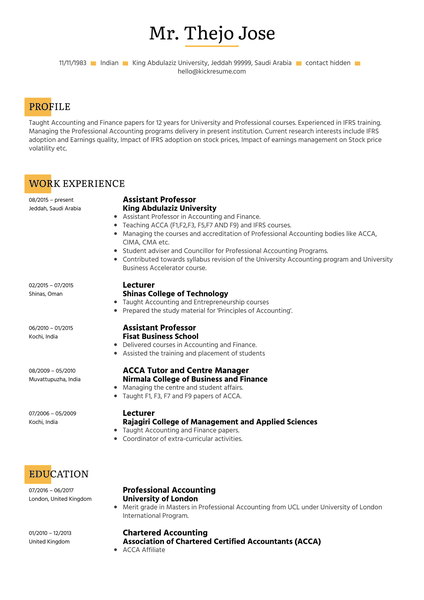




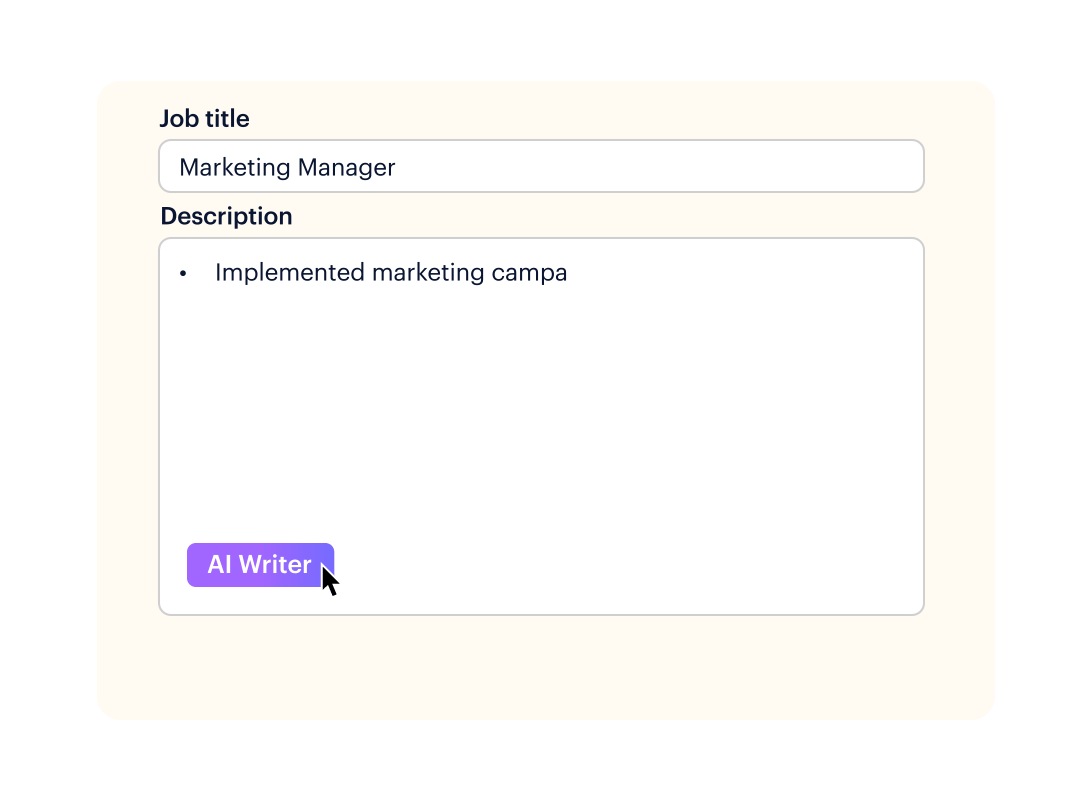

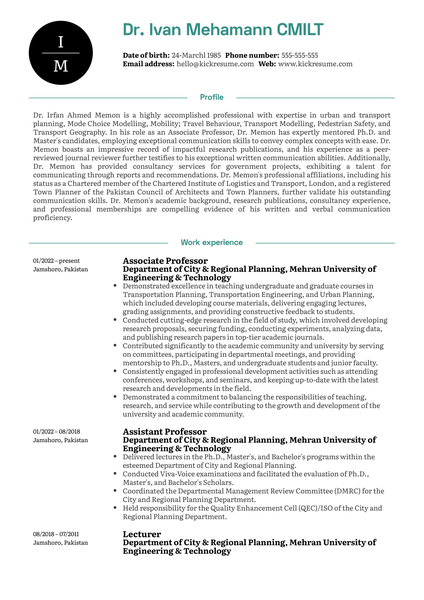

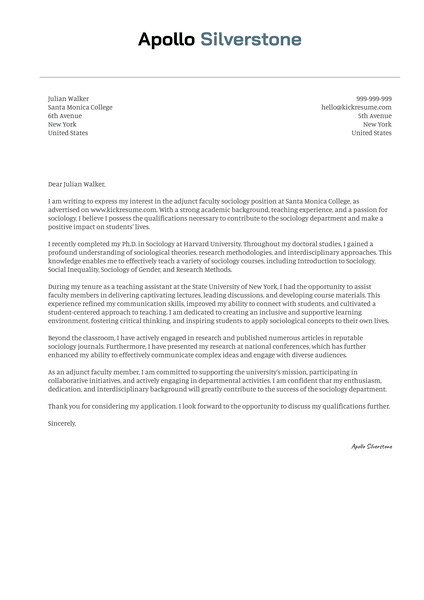

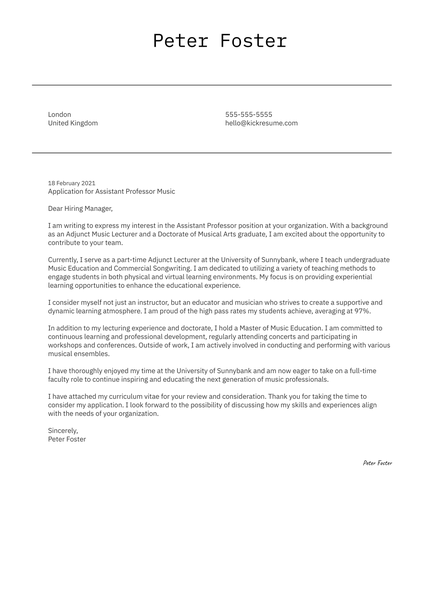
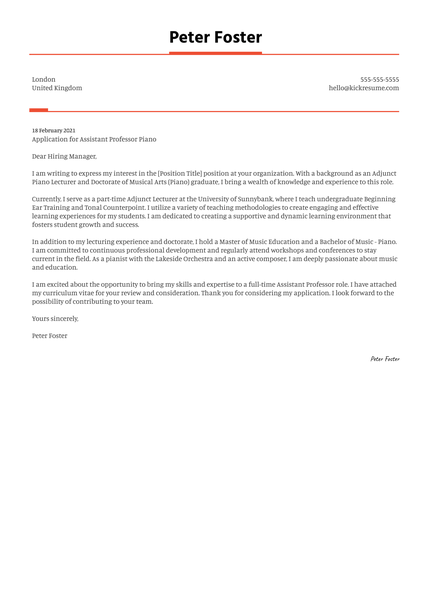
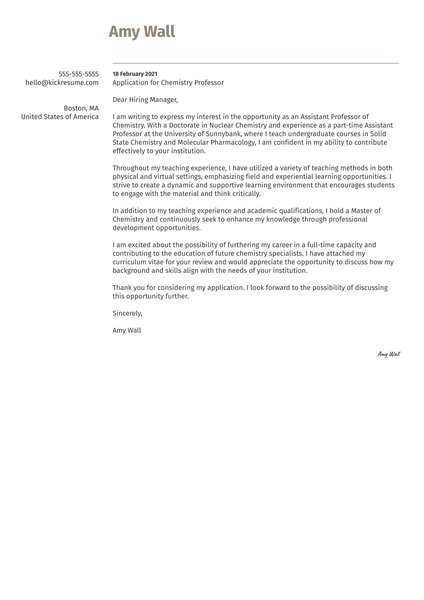


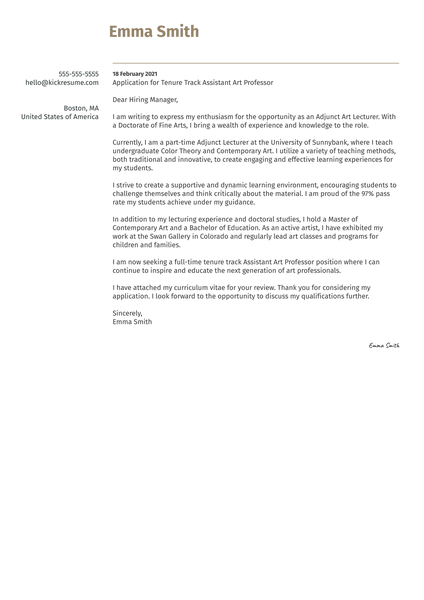
![How to Write a Professional Resume Summary? [+Examples]](https://d2xe0iugdha6pz.cloudfront.net/article-small-images/i-Profile.svg)
![How to Put Your Education on a Resume? [+Examples]](https://d2xe0iugdha6pz.cloudfront.net/article-small-images/i-Collage-Universities.svg)
![How to Describe Your Work Experience on a Resume? [+Examples]](https://d2xe0iugdha6pz.cloudfront.net/article-small-images/Experience.svg)


